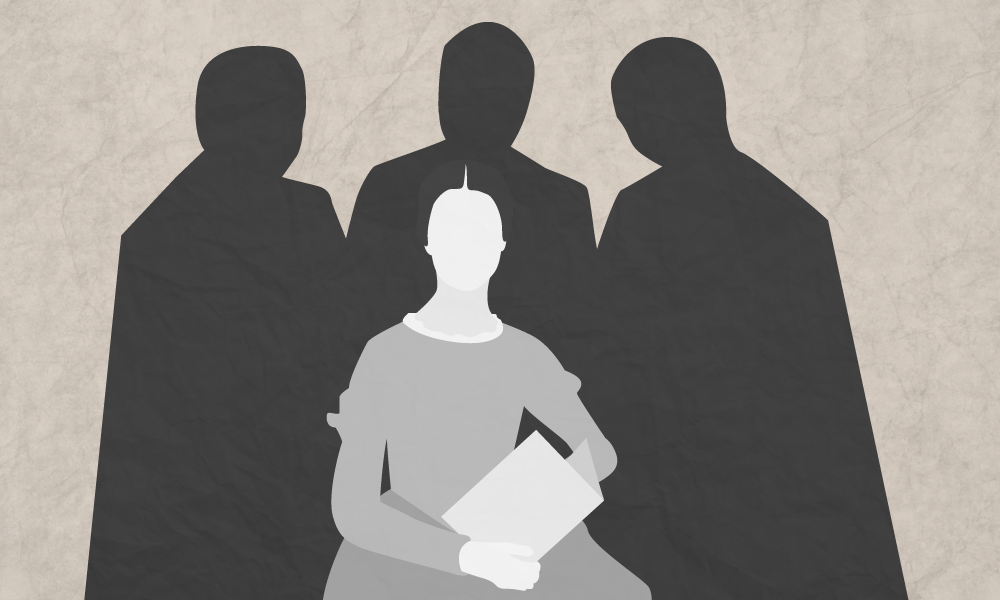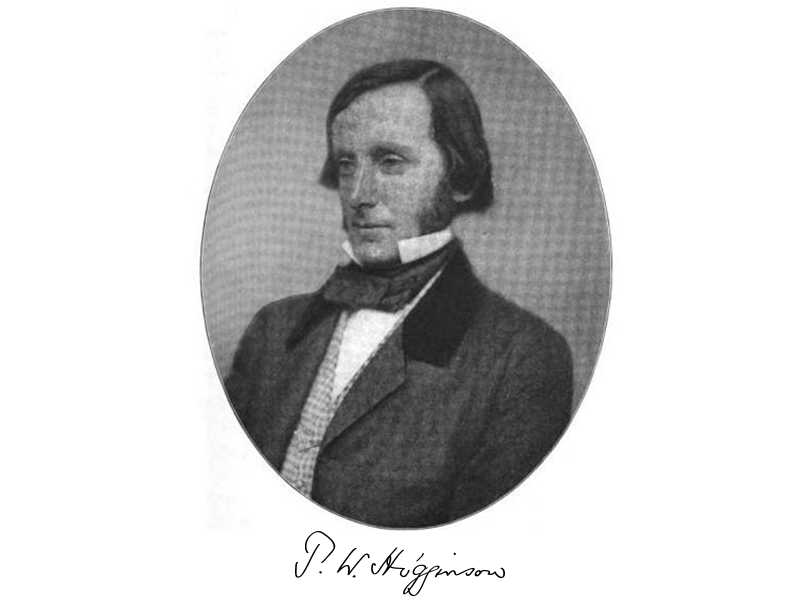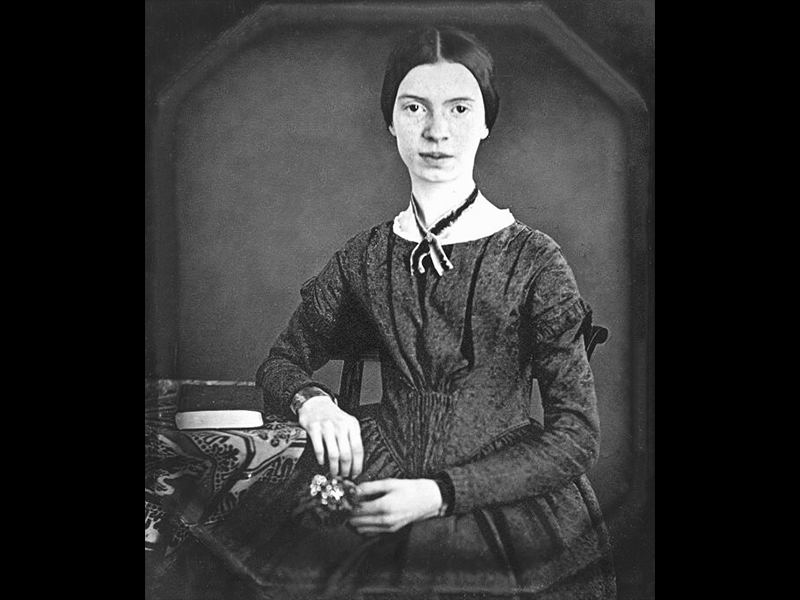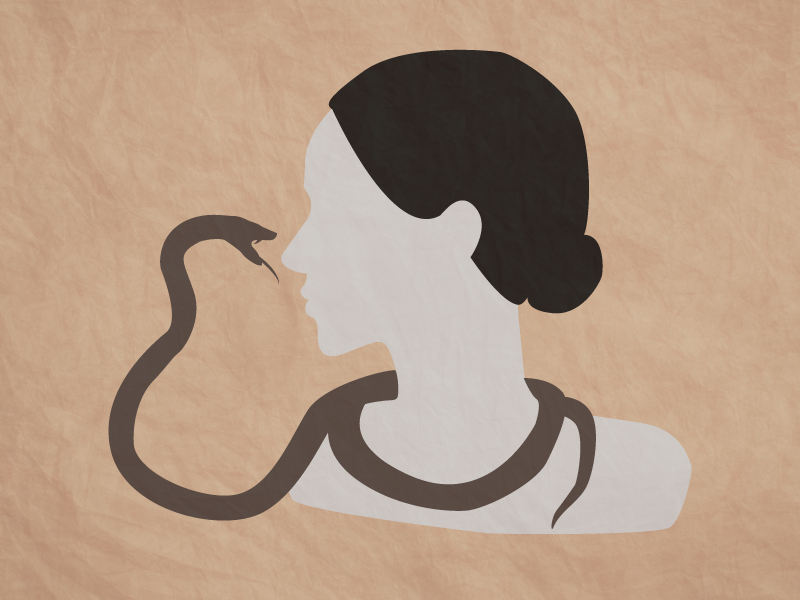Scholars have been laboring for more than a century to transform Emily Dickinson’s faint pencil jottings on envelopes, letters, and sewn sheets into accurate and readable editions of some or all of her 1,800 poems. Recently, there has been a counter movement to return Dickinson’s verse to something like the textual fluidity of its original state, which in practice is rather like returning nonspecialists to the state of dazed incomprehension experienced by the small circle of her earliest readers. The online Emily Dickinson Archive, which reproduces the manuscripts with all their wayward calligraphy and unresolved word choices, is a necessary and laudable enterprise, but the last thing it does is make her poetry more accessible. You thought it was hard reading Emily Dickinson before? It just got harder.
There are reasons to believe that the effort to present Dickinson’s poetry in its original handwritten intimacy is misguided, starting with the belief (mine, admittedly) that she would have loved to be published, notwithstanding her demurral to the writer and editor Thomas Wentworth Higginson that publication was as foreign to her thought “as Firmament to Fin.” Writers, generally speaking, are whores for publication, and when they don’t get published, or don’t get published in the form they’d like, they’ll tell anyone anything to salvage their pride. If Higginson had even half understood her, Dickinson might have had very different things to say about the “foreignness” of publication. When she complained to him about the appearance of “A narrow Fellow in the Grass” in the Springfield Republican (one of only ten poems to be published in her lifetime), her complaint wasn’t that the rectilinear impersonality of newsprint had violated the spirit of her poetry. Her complaint was that the editors had botched the punctuation. The poem was “robbed” of her, she told Higginson (meaning that she hadn’t authorized it), but what especially bothered her was that it was “defeated too of the third line by the punctuation” — a misplaced question mark, as it happens, which makes a hash of that and the following line. (The published version read: “You may have met him — did you not? / His notice instant is” instead of “You may have met him? Did you not / His notice instant is.”) In other words, she was complaining about bad editing, not the “foulness” (as she once called it) of publication.
I myself can barely decipher a word of Dickinson’s manuscripts, either online or in actuality, where I just saw a sampling of the them in an exhibition (“I’m Nobody? Who Are You: The Life and Poetry of Emily Dickinson”) at the Morgan Library in New York. Fortunately, the digital archive will always be available for those scholars and diligent readers persuaded that print editions can only misrepresent the poet’s achievement. For the rest of us, who love Emily Dickinson but are neither scholarly nor exceptionally diligent, some basic issues need to be addressed before we can begin decoding her calligraphic eccentricities. For instance: What’s with all the dashes?
Maybe the chief difference between a Dickinson scholar and a Dickinson amateur (like me) is that the scholar is in love with and can justify every last dash, whereas the amateur, desperate for the guidance provided by rational punctuation, mentally supplies the missing commas, colons, semicolons, and periods not to be found in the poems themselves. It’s true that the dashes often achieve effects not possible with standard punctuation, not least a sense of indeterminacy, of thought breaking in upon thought. “Pain — has an Element of Blank — “ is starker, more dramatic, more painful, as it were, than “Pain has an Element of Blank.” When Higginson complained to Dickinson that the poems she sent him had a “spasmodic gait,” he was right. He just didn’t get the point. Dickinson challenges the mind; she does not flatter the ear. Her staccato rhythms, enforced by the ubiquitous dashes, require a deliberate, almost mathematical manner of reading. There’s nothing in the least impressionistic about her poetry; it insists on being interpreted. Even so, can anyone truly read these poems without editing them in her head, supplying the punctuation necessary for many of them to make a modicum of sense? All part of the poet’s plan, no doubt; lulling euphony was as foreign to her thought as Firmament to Fin. But reading Emily Dickinson can be a frustrating experience, and it only gets more frustrating if we must genuflect before every manuscript variant or superfluous dash.
Consider “This is my letter to the World,” on the surface one of the simplest poems she ever wrote. How many thousands of undergraduates have got this one wrong, solely on the basis of — those damned — dashes in the — seventh — line? As it stands (“For love of Her — Sweet — countrymen — / Judge tenderly — of Me”), even an experienced Dickinsonian might think for a moment that the poet is pleading for her sweet countrymen rather than to her sweet countrymen. It makes a difference, and a couple of aptly placed commas might have cleared up things admirably. Clearing up things admirably was, of course, the last thing that Emily Dickinson aspired to do; she preferred to complicate things fruitfully. And yet the tortuous justification of every dash urged on us by Dickinson scholars strains credibility. If, as is often the case, Emily Dickinson fails to provide intelligible punctuation, we’ll just have to do it for her.
But would anyone really want a smoother Dickinson, with standardized punctuation, explanatory titles, and regularized rhymes? That’s exactly what people got up to 1955, when Thomas H. Johnson issued the first variorum edition. If Dickinson was unhappy with what the Springfield Republican did to “A narrow Fellow in the Grass,” it’s a good thing she didn’t live to see the handiwork of her first editors, Mabel Loomis Todd and Martha Dickinson Bianchi. Nevertheless, it’s easy to see why Todd (the mistress of Dickinson’s brother Austin) and Dickinson Bianchi (Austin’s daughter) felt compelled to tidy her up. Partly they were palliating her blasphemy and harrowing skepticism (among the poet’s other scandalous habits of mind), but they were also making a sincere and, given the state of the manuscripts, heroic effort to put Dickinson within the reach of common readers. Editorial practices are more transparent today, and despite my frustration with Dickinson’s orthographic idiosyncrasies, I am hardly advocating a return to the sentimentalized Dickinson of earlier editions. I am suggesting, however, that there’s no shame in reading this dash as a comma or overlooking that one entirely. Once you’ve reconstructed a Dickinson poem in this way, you can go back and read it with all the dashes and spaces intact — that is, with the jagged edges and gaps that are there by (not always happy) design. If this way of reading Dickinson seems to turn poetry into prose, it also turns prose back into poetry. There’s no poetry in incomprehension.
Nor is it enough to supply Dickinson’s missing punctuation. It’s also necessary to conjugate her verbs. She rarely chose an inflected verb when an uninflected one would do. Basically, she just took the infinitive, lopped off the “to,” and plugged in the remaining stem, regardless of person, number, or even tense. What the uninflected verbs do is evoke a sense of mystery and universality, of the particular case implying the general one, which mirrors the movement of many Dickinson lyrics from the concrete to the abstract. What they also do is confuse the hell out of people. Even now I sometimes get lost in the limbo between apparently singular subjects and verbs that imply plurality. For example:
Essential Oils — are wrung —
The Attar from the Rose
Be not expressed by Suns — alone —
It is the gift of Screws —
Typically disorientating at first blush, this quatrain starts to make sense once you understand that the first line is a complete sentence syntactically unconnected to the second line and that the “Be” in the third line is not a subjunctive (though Dickinson was happy to borrow its appearance) but simply her peculiar way of saying “is.” In the second quatrain all the verbs are uninflected:
The General Rose — decay —
But this — in Lady’s Drawer
Make Summer — When the Lady Lie
In Ceaseless Rosemary —
Is it allowable to add the terminal “s” that grammar demands to “decay,” “Make,” and “Lie”? I say it is, with this proviso: After you’ve properly inflected the verbs, you then uninflect them. Reading Dickinson takes practice; a little cheating isn’t fatal. In my experience, many Dickinson readers do it anyway, with or without my sanction. There’s something partly folkloric in Dickinson, starting with the preferred “eights and sixes” of her meter, which she appropriated from the Protestant hymnal and which would have been as familiar to farmers and seamstresses as to congressmen and lawyers (like her father and brother). Would Dickinson’s grammatical practices have been quite so eccentric if she had had the sort of rounded education available to upper class men like her brother? Maybe we should be grateful that she didn’t, though I doubt that any amount of institutional authority could have tamed her wildness. (Austin had degrees from Amherst and Harvard; Emily had one year at Mount Holyoke before her father decided that that was quite enough for his dangerously intellectual daughter.) All the same, I can’t help wishing that when she incorporated a bit of dialogue from a talking serpent in poem 1742 (“In Winter in my Room”), she might have distinguished attribution from quotation. No amount of scholarly exegesis can make this come right. “Afraid he hissed / Of me”? is unambiguously, confusingly, and distractingly wrong. What she meant to say, and didn’t, was, “Afraid,” he hissed, / “of me?”
I also wish that she had been somewhat more meticulous with the parts of speech. Adjectives become adverbs, personal pronouns become intensive pronouns. Dickinson would rather glance “narrow at the floor” than glance narrowly at the floor, and even though she often uses these adjective/adverb admixtures with verbs of perception (technically permissible), the sheer oddness of it disorients. This is starting to sound familiar. Isn’t her poetry designed to disorient, to startle readers into thoughts and perceptions unattainable by conventional forms? Yes it is, which means that my schoolmasterly reprimands have gone about as far as they can go. It wouldn’t hurt, though, if Dickinson professionals might concede that general readers face obstacles to comprehension not mitigated by the endlessly vanishing perspective of the Emily Dickinson Archive or the assumption that every willfully misplaced dash must be reverenced.
I said before that reading Dickinson can be a frustrating experience, and sometimes my frustration (see above) gets the better of me. There’s a cure for that. It consists of returning to her greatest poems, the ones I’ve lived with long enough to penetrate beneath their surface oddities. Furthermore, I read these poems in uniform editions in which scholars have made responsible choices based on manuscript collation and other factors that will always be, rightly, cause for debate and revision. I still haven’t got to the end of her 1,800 poems. There’s plenty of room left for surprise, delight, and fruitful disorientation. But the ones I’ve absorbed most fully reward many times over the effort they require. It seems to me that at her frequent best Dickinson does almost everything that poetry can do. In less space than a recipe for crumb cake, a Dickinson lyric might burrow beneath the soil to examine the consciousness of the moldering dead or scoop pearls from the sea that she never saw. Her range is vast, and the stuff out of which she makes her poetry — flowers, fabrics, churchgoing, housekeeping, birdsong, and the Bible — turns domesticity into epic.
The Emily Dickinson Archive offers one key variant in the last and eighth line of poem 588, “The Heart asks Pleasure — first.” As usual, I can barely distinguish the three words she scribbled beneath the preserved draft of the poem, but the editors inform me that she considered substituting one of those words (“liberty”) for “privilege” in “The privilege to die.” That doesn’t help me much. Every poet considers innumerable alternatives, and the poem that people have been reading since 1955 is not improved by the option to choose (as the poet ultimately did not) “the liberty to die” over the more precisely oxymoronic “the privilege to die.” That line comes as the climax of an escalating series of declensions sequenced with a crushing nonchalance hardly rivaled by Samuel Beckett and other masters of refusal:
The Heart asks Pleasure — first —
And then — excuse from Pain —
And then — those little Anodynes
That deaden suffering —And then — to go to sleep —
And then — if it should be
The will of its Inquisitor
The privilege to die —
Only ten dashes — meager by Dickinson’s standards, but within those dashes is a personal and universal history from birth to death, from hope to despair, with a lifetime of compromises and disillusions in between. Better to share that pain than to bear it alone. We share the pain, as well as the joy, wonder, doubt, and discovery, with a poet whose willed difficulties insist on our fullest collaboration. •
Feature image by Shannon Sands. Images courtesy of Connormath and Midnightdreary via Wikimedia Commons. Other images courtesy of Shannon Sands.







